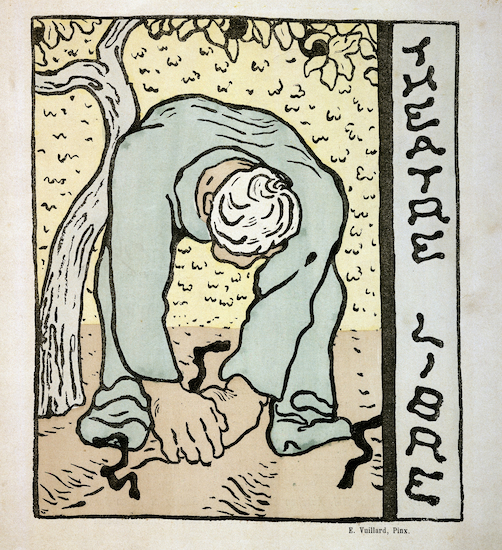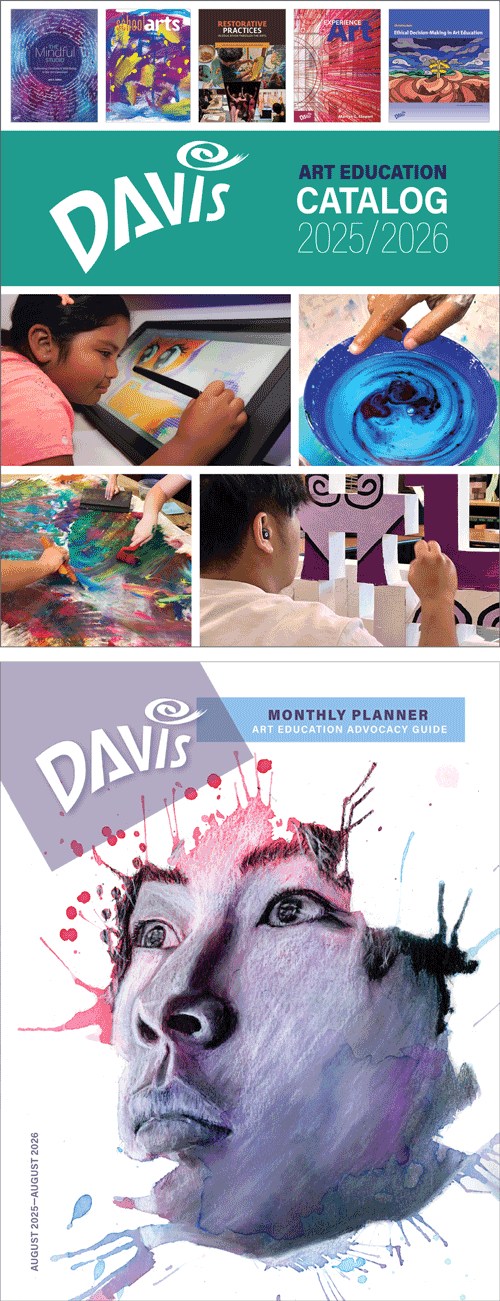Artist Birthday: Édouard Vuillard
Édouard Vuillard was a pivotal artist in the transition from representational and abstract art. He was a member of the Nabis group of painters, "nabi" a Hebrew word for prophet, indicating that these artists felt they were in the vanguard of modern painting.
Artist Birthday for 11 November: Édouard Vuillard (1868-1940 France)
 |
| Édouard Vuillard, program for the Théâtre Libre for three plays (Monsieur Brute, The Love of His Wife, and The Beautiful Operation, 1890, photo-relief with watercolor stenciling (pochoir) on paper, 21.5 x 19.9 National Gallery of Art, Washington, © 2025 Artists Rights Society (ARS), New York (NGA-P1063vuars) |
Like the other Nabi artists, Vuillard sought in his work the simplification of form and an emphasis on strong contour lines seen in Japanese Ukiyo-e woodcut prints. In the 1890s, Vuillard began producing illustrations for theater programs and posters for the Theater of Art, a locale that introduced Symbolist plays to Paris. Vuillard was drawn to theater and often designed sets and costumes. His introduction to the Natanson brothers (Alexandre 1867-1936, Alfred 1873-1932, and Thadée 1868-1951) who founded the satirical and art magazine La revue blanche cemented his authority as a graphic designer.
This program for the Free Theater shows the influences that Japanese prints and the Nabis had on the development of Vuillard's style. The forms are large areas of flat color with strong contour lines. In spirit the figure harks back to the peasant figures of Realist painters Jean-Francois Millet (1814-1875) and Gustave Courbet (1819-1877). The decorative line and overall pattern of leaves reflect aspects of Vuillard's paintings, particularly those of interiors, where pattern rules.
Background
The optimism and enthusiasm with which Western European artists greeted the industrialization of Europe in the mid-1800s did not last. Rapid urbanization, industrial pollution and the spoiling of the Impressionists' cherished landscapes by the 1880s had led to a mood of disappointment.
Furthermore, Impressionist artists realized that the empirical expression of nature in their painting -- the truth to nature -- was bound, like everything else, to yield to the artists own emotions and political reality. Hence Claude Monet's (1840-1926) self-exile increasingly at the end of the century to his sanctuary at Giverny.
Coinciding with political reality for artists in the 1880s was the fact that the freshness of Impressionism as a revolutionary new aesthetic in painting had run its course. As it is with any stylistic movement that is bounded by strict aesthetic guidelines -- direct observation of the reactions to light on local color at specific times of day -- Impressionism, by the 1880s had become almost academic itself. This was evidenced in Renoir's brief sojourn from the style during the 1880s.
The late 1800s saw physical changes to the environment and upheavals in the social order. These factors caused some artists to wonder if an outward perspective, of looking at nature, was the way to interpret the world, or if they should instead turn inward and follow impulses and imagination. Ultimately this led to movements even more startling than Impressionism in their "violation" of academic tradition and strict adherence to visual fact. The variety of styles that resulted are grouped under the umbrella term Post-Impressionism.
Édouard Vuillard was born and spent his childhood at Cuiseaux, but moved to Paris with his family when he was ten years old. He began regularly visiting the Louvre while in high school (Lycée), where he determined that he wanted to be an artist. In 1885 he left school to pursue a career in art, going against the family tradition of a career in the army. He joined the atelier of the academic painter Diogène Maillart (1840-1926) where he learned the rudiments of painting. Maillart was also an illustrator and art critic.
In 1889 Vuillard entered the conservative School of Fine Arts where he studied briefly under the academic Neoclassicist Jean-Léon Gérôme (1824-1904). While studying at the School, Vuillard became interested in still life and domestic interiors. Ultimately, however, he joined the circle of Paul Sérusier (1867-1924), a group called the Brotherhood of the Nabis. These artists came to paint in a type of Symbolism called Synthesism. This aesthetic relied on memory, imagination and the use of brilliant Impressionist color and flat shapes to define form.
Correlations to Davis programs: Communicating Through Graphic Design 1E, Chapter 2; Experience Printmaking, Chapter 8

Comments